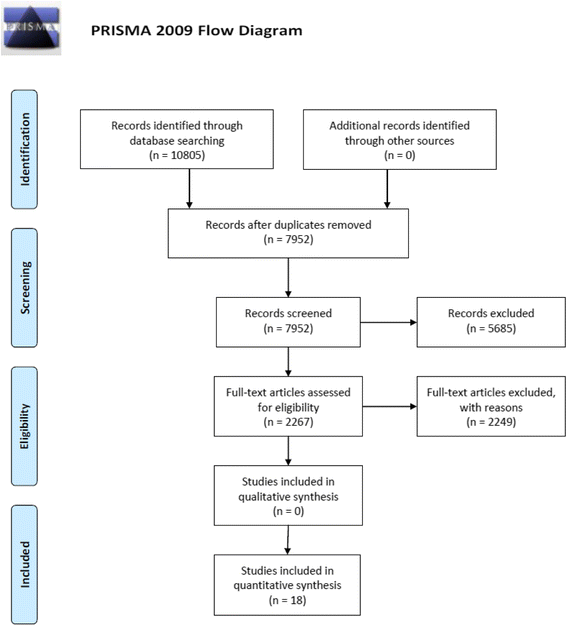Knowledge translation tools for parents on child health topics: a scoping review
- PMID: 28962637
- PMCID: PMC5622461
- DOI: 10.1186/s12913-017-2632-2
Knowledge translation tools for parents on child health topics: a scoping review
Abstract
Background: An emerging field of knowledge translation (KT) research has begun to focus on health consumers, particularly in child health. KT tools provide health consumers with research knowledge to inform health decision-making and may foster 'effective consumers'. Thus, the purpose of this scoping review was to describe the state of the field of previously published effectiveness research on child health-related KT tools for parents/caregivers to understand the evidence-base, identify gaps, and guide future research efforts.
Methods: A health research librarian developed and implemented search strategies in 8 databases. One reviewer conducted screening using pre-determined criteria. A second reviewer verified 10% of screening decisions. Data extraction was performed by one reviewer. A descriptive analysis was conducted and included patient-important outcome classification, WIDER Recommendation checklist, and methodological quality assessment.
Results: Seven thousand nine hundred fifty two independent titles and abstracts were reviewed, 2267 full-text studies were retrieved and reviewed, and 18 articles were included in the final data set. A variety of KT tools, including single- (n = 10) and multi-component tools (n = 10), were evaluated spanning acute (n = 4), chronic (n = 5) and public/population health (n = 9) child health topics. Study designs included: cross-sectional (n = 4), before-after (n = 1), controlled before-after (n = 2), cohort (n = 1), and RCTs (n = 10). The KT tools were evaluated via single primary outcome category (n = 11) and multiple primary outcome categories (n = 7). Two studies demonstrated significant positive effects on primary outcome categories; the remaining studies demonstrated mixed effects (n = 9) and no effect (n = 3). Overall, methodological quality was poor; studies lacked a priori protocols (n = 18) and sample size calculations (n = 13). Overall, intervention reporting was also poor; KT tools lacked description of theoretical underpinnings (n = 14), end-user engagement (n = 13), and preliminary research (n = 9) to inform the current effectiveness evaluation.
Conclusions: A number of child health-related knowledge translation tools have been developed for parents/caregivers. However, numerous outcomes were used to assess impact and there is limited evidence demonstrating their effectiveness. Moreover, the methodological rigor and reporting of effectiveness studies is limited. Careful tool development involving end-users and preliminary research, including usability testing and mixed methods, prior to large-scale studies may be important to advance the science of KT for health consumers.
Keywords: Caregivers; Child health; Health consumers; Knowledge translation; Parents; Pediatrics.
Conflict of interest statement
Ethics approval and consent to participate
Not applicable. Scoping review conducted secondary analysis of previously published literature.
Consent for publication
Not applicable.
Competing interests
The authors declare that they have no competing interests.
Publisher’s Note
Springer Nature remains neutral with regard to jurisdictional claims in published maps and institutional affiliations.
Figures
Similar articles
-
Comparative Usability Analysis and Parental Preferences of Three Web-Based Knowledge Translation Tools: Multimethod Study.J Med Internet Res. 2020 Mar 13;22(3):e14562. doi: 10.2196/14562. J Med Internet Res. 2020. PMID: 32167478 Free PMC article.
-
The Effectiveness of Integrated Care Pathways for Adults and Children in Health Care Settings: A Systematic Review.JBI Libr Syst Rev. 2009;7(3):80-129. doi: 10.11124/01938924-200907030-00001. JBI Libr Syst Rev. 2009. PMID: 27820426
-
Beyond the black stump: rapid reviews of health research issues affecting regional, rural and remote Australia.Med J Aust. 2020 Dec;213 Suppl 11:S3-S32.e1. doi: 10.5694/mja2.50881. Med J Aust. 2020. PMID: 33314144
-
Strategies used for childhood chronic functional constipation: the SUCCESS evidence synthesis.Health Technol Assess. 2024 Jan;28(5):1-266. doi: 10.3310/PLTR9622. Health Technol Assess. 2024. PMID: 38343084 Free PMC article.
-
Knowledge Translation Strategies Used by Healthcare Professionals in Child Health Settings: An Updated Systematic Review.J Pediatr Nurs. 2019 Jul-Aug;47:114-120. doi: 10.1016/j.pedn.2019.04.026. Epub 2019 May 17. J Pediatr Nurs. 2019. PMID: 31108324
Cited by
-
Evaluating a knowledge translation tool for parents about pediatric acute gastroenteritis: a pilot randomized trial.Pilot Feasibility Stud. 2018 Aug 2;4:131. doi: 10.1186/s40814-018-0318-0. eCollection 2018. Pilot Feasibility Stud. 2018. PMID: 30123522 Free PMC article.
-
Exploring methods for creating or adapting knowledge mobilization products for culturally and linguistically diverse audiences: a scoping review.Arch Public Health. 2024 Jul 22;82(1):111. doi: 10.1186/s13690-024-01334-0. Arch Public Health. 2024. PMID: 39034399 Free PMC article.
-
Adapting Child Health Knowledge Translation Tools for Use by Indigenous Communities: Qualitative Study Exploring Health Care Providers' Perspectives.JMIR Form Res. 2022 Oct 5;6(10):e36353. doi: 10.2196/36353. JMIR Form Res. 2022. PMID: 36197711 Free PMC article.
-
Perspectives From French and Filipino Parents on the Adaptation of Child Health Knowledge Translation Tools: Qualitative Exploration.JMIR Form Res. 2022 Mar 25;6(3):e33156. doi: 10.2196/33156. JMIR Form Res. 2022. PMID: 35333185 Free PMC article.
-
Comparative Usability Analysis and Parental Preferences of Three Web-Based Knowledge Translation Tools: Multimethod Study.J Med Internet Res. 2020 Mar 13;22(3):e14562. doi: 10.2196/14562. J Med Internet Res. 2020. PMID: 32167478 Free PMC article.
References
-
- Canadian Institutes of Health Research. Knowledge translation definition. http://www.cihr-irsc.gc.ca/e/29418.html#2 (2015). Accessed 18 March 2015.
-
- Institute of Medicine. Crossing the quality chasm: a new health system for the 21st century. 2000. http://www.nap.edu/books/0309072808/html/. Accessed 20 March 2015.
Publication types
MeSH terms
LinkOut - more resources
Full Text Sources
Other Literature Sources
Medical
Molecular Biology Databases


